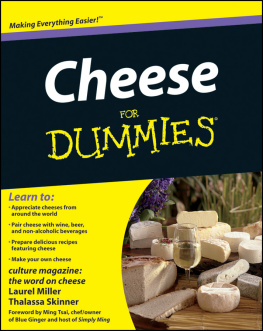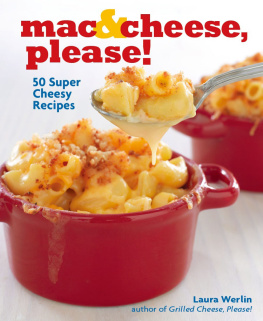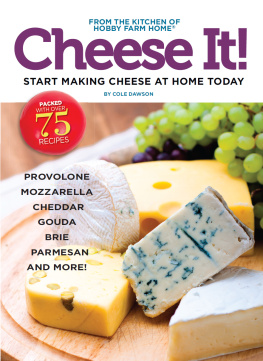It may seem slightly foolish to begin with the idea of cheese as a part of early civilization, but few would dispute the significant role domesticated animals played in allowing hunters and gatherers to become herders and farmers. And where there are herds of animals there is milk, and where there is milk, almost always there is cheese. Sheep and goats were among the first domesticated animals, and though the discovery of cheese making is not documented, most food historians believe humans learned to make cheese fairly early on in their existence.
Milk separates into curds and whey when it spoils, or when it encounters an enzyme or chemical that causes it to separate. This separation is the first step in making cheese. In ancient times, dried animal stomachs were often used as vessels, and most likely held milk. Animal stomachs contain chymosin, a form of rennet. So, when someone carried milk in the lining of an animal stomach, instead of souring, it curdled and became a mild-tasting cheese. No doubt the same person tasted it, didn't die, and cheese, a new food, presented itself to people. This may have happened by 7000 B.C. Certainly it occurred by 3000 B.C.
Cheese was probably first produced along a strip of land between the Tigris and Eurphrates Rivers, in what is now Iraq. Around 7000 B.C., people herded cattle and goats, and archaeological digs have produced some evidence of processes that could have made cheese. It may be simply wishful to think some of the first cheese was made in Switzerland, but interestingly, around 6000 B.C., along the banks of Lake Neuchatel, Switzerland, people were making pottery with drain holes, which could be the earliest evidence of vessels used to drain the whey from curds. Again, there is no indisputable evidence of cheese making then, but the animals and tools were there.
Rennet is a broad term used to refer to substances that make milk curds coagulate. Throughout history, many different forms of rennet have been used: enzymes from animals, plant extracts, and fungus extracts. Today, manufactured enzymes are also available. No matter what type of rennet is used, most cheese makers today buy rennet in liquid or powder form from dairy-supply companies.
By 5000 B.C. many people throughout what is now the Mediterranean and the Middle East had shifted from nomadic to domesticated life and maintained herds of sheep and goats. Two thousand years later, in 3000 B.C., the Sumerians, who were the earliest settlers of Mesopotamia, recorded their activities on clay tablets, using pictures, and within these tablets are descriptions of twenty different types of cheese. While King Shoulgi ruled the Sumerians, cheese making was included as part of the records on food production, and clay tablets have been found that record an eight-year cheese history. In the beginning, 8 liters of cheese were made in one year. Eight years later, 63.3 liters of cheese were produced. This first real evidence of cheese in civilization certainly seems sophisticated enough to suggest that cheese-making procedures were already advanced beyond any beginning stage. From there, cheese making branches out all along the northern tip of Africa, and into southern Europe.
The Egyptians definitely knew about cheese. An excavation of King Horaha's tomb, dated at 2300 B.C., revealed the remains of cheese. Cheese was sold at markets in Babylonia, and in 1600 B.C. King Hammurabi II established a Code of the Amorite to regulate taxes on dairy food, including cheese.
Cheese in Ancient Europe
The Basque claim that some of their cheese recipes are 4,000 years old, which means cheese making began in that area around 2000 B.C. And, cheese appears among some of the first writings about ancient civilization. According to Homer's Illiad, the serving woman Hecamede healed Prince Machaon's Trojan War wounds with a mixture of wine and grated goat's-milk cheese. And Pliny the Elder, a first century B.C. scholar, soldier, and author of numerous volumes chronicling wars between the Romans and Germans, credits a twenty-year cheese diet for the Iranian prophet Zoroaster's eloquence. The earliest days of Rome included cheese; in fact, separate kitchens were devoted to perfecting the art of making, smoking, and ripening it.
Cheese Spreads Across the Globe
As civilization progressed in the form of Greek colonies, the Golden Age of Athens, Alexander the Great, Hannibal, the rise and fall of Carthage, and the birth of Christ, cheese not only survived, it also became a dietary staple throughout the Mediterranean, North Africa, the Iberian Peninsula, the British Isles, and most of what is now called Europe. The only area it did not survive in was China, and for that some credit can probably be given to Confucius, who believed and taught that spoiled food was unhygienic. He likely viewed soured milk as spoiled milk. Since the Chinese did not have ready access to fresh milk or preserved milk products, some believe this was the beginning of a historically high number of Chinese with lactose intolerance.
European Cheese Takes Shape
From most accounts, the centuries between A.D. 200 and A.D. 600, the Dark Ages, were mostly ones of meager survival, and certainly not a time when it was safe to graze animals and produce food without fear of destruction. During this time, cheese followed a couple of different paths, one associated with war, the other with peace. It fed the Barbarians the Goths, Visigoths, Vandals, Gepids, Alemanni, and Franks, who survived primarily on cheese, meat, and milk while they plundered the continent and it fed the monks, who quietly retreated to their monasteries where they spent lots of time growing and producing food. In fact, Benedictine and Cistercian monks, who saved many people from starvation during these years, became such extraordinary cheese makers that many of their recipes are still made today.










